Ultra-Rare Food From Around The World
As humans, it's in our nature to covet; especially when it comes to rare and highly sought-after objects, if for no other reason than to simply posses them so that others do not. It's also in our nature to consume: food, resources, land, lives; everything is devoured in our relentless conquest of the globe and the various life-forms that inhabit it.
Skip to it...
More Articles...
- The Most Expensive And Luxurious Hotel Suites In The World
- Weird (And Slightly Disgusting) Food From Around the World
- Common Travel Scams Exposed and Explained: Don't Fall Victim
- The Worst Travel Destinations in the World
- The Most Extreme and Isolated Places to Live in the World
- Fancy Trying Something New For Dinner?
- Things You Don't Want Inside You While On Holiday
- 10 Highest Bodycount Plane Crashes
- 10 Deadly Places and Why You Have to See Them
- Stunning Videogame Locales - Exotic and Fantastic Locations That We Wish We Could Visit (And Some We'd Take Guns To)
- Stunning Videogame Locales Redux - More Awesome Places To Visit (But We'd Still Bring Guns To Some Of Them)
- 18 Awesome Aircraft Landings
- Fictional Metals That Are Made Of Pure Awesome
- Freakish Animals That Want To Kill You
- 10 of the Most Expensive Private Islands in the World
If we follow on from this reasoning, we can presume that rare consumables will hold a particular sway over our psyche, much in the way that a magpie pursues shiny things. This is a list dedicated to some of the rarer foods out there that - while maybe not all that delicious or appetizing - should satisfying that primal urge to "eat stuff there isn't that much of" as it were.
Salt
Amabito No Moshio (Seaweed Salt, also referred to as Ancient Sea salt) is perhaps the world's rarest and most expensive sea salt and produced only in Japan.
Sea salt generally differs in quality from standard rock salt, with sea salt being prized over and above thanks to the wild combinations of minerals and flavors that accumulate within the salt thanks to the cosmopolitan nature of the sea itself.
What makes Amabito No Moshio the salt to end all salts is that it follows a strict refining process in order to produce a sea salt that is truly unique. Unpolluted salt water is collected from the Seto Inland Sea and left out to slightly evaporate, making it all the more salty until seaweed is introduced into the salt water, lending to its unique color and flavor.
After some time, this seaweed is then removed and the remaining salt water solution is transferred into an iron kettle and processed (or cooked, I suppose) until what remains are more recognizable salt-like crystals. The next step is slightly more modern in that the salt is then put into a centrifuge to get rid of the last of the water, after which the remaining salt is then cooking more thoroughly inside a large cooking pot over a fire, which is continuously stirred to prevent burning and allows for the salt to become more recognizable as such.
Essentially, Amabito No Moshio is an extravagant salt infused with the flavors of the ocean and refined using a mixture of ancient and modern methods into a really decadent seasoning. It's also really expensive, the cheapest being around $45 a pound, depending how much you order in one go.
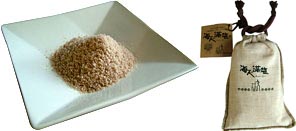
Bird's Nest Soup
Probably as delicious as it sounds, the central nest in this Chinese delicacy is made entirely from the saliva of cave swifts. Mmm, food made from animal spit, delicious.
The nests are carefully and painstakingly constructing by the cave swifts using nothing but their own saliva, strand after strand of which solidifies to form the primary ingredient in bird's nest soup and one of the most expensive animal products to be consumed by Man. The nest itself is dissolved in water where it then assumes a gelatinous texture and is supposedly an aphrodisiac (much like everything else, apparently) with medicinal purposes.
Harvested directly from the cave swift caves or from specially-constructed buildings designed to act as nesting-houses for the swifts, the nests can fetch around $2,000 a kilogram, with the rarer-still "red blood" variety of nest fetching somewhere in the region of $10,000 for a kilogram.
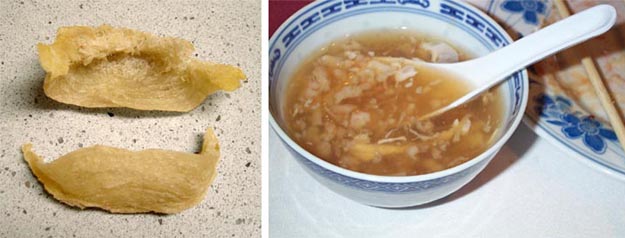
Caffé Raro
Not just a single rare coffee, this one, but rather a blend of the two rarest and most expensive coffees on the planet, for double the decadence.
Caffé Raro, as the blend is being called, is a combination of Jamaican Blue Mountain and Kopi Luwak. It is the latter of the two coffees that has garnered considerable interest in recent years primarily thanks to the fact that it's made from cat crap.
Kopi Luwak is made from coffee beans that have passed through the digestive tract (read: crapped out) by the Asian Palm Civet, a freaky-looking mammal...thing. People wishing to harvest this particular coffee bean have to spend their days searching for the droppings of these civets, only to rinse them thoroughly (one would hope) to achieve the bean in its "natural" state, ready to be made into delicious crap coffee. With only a small amount of this coffee being produced each year, the price is extremely high and makes it the most expensive coffee in the world, after Caffé Raro, of course.
The super-expensive blend, Caffé Raro, is being marketed at £ 50 (around $80) for a small cup of the stuff. Promoted as a coffee for those that want to experience a rarity in flavors amongst coffee blends (with actual flavor in a cup of coffee being worth the price alone), it seems more likely that the coffee is a result of an insane wish to see what would happen if you took one outrageously expensive coffee and mashed it into another, similarly overpriced coffee. But made from crap.
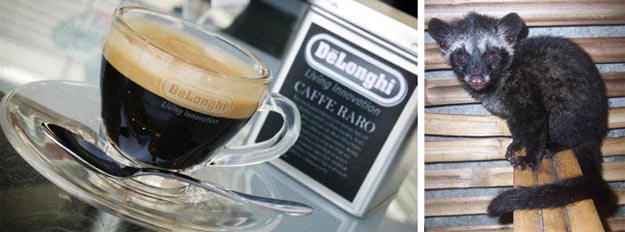
Square Watermelon
Just as awesome as it sounds, the square watermelon is the product of unique Japanese minds when the search for an easily stackable watermelon came to fruition.
Square watermelons were produced by farmer in the Zentsuji region by confining the growing fruit within glass containers, thereby forcing the fruit to grow into the shape of the container, a square. Think of it as fruit cruelty, if you will.
The idea behind this uniquely-shaped watermelon was to allow for them to be stacked efficiently, as the traditional round watermelons would quite obviously roll everywhere and are generally harder to store/stack/wear as a hat. So the farmer of Zentsuji answered the cries of what must have been at least ten people and lo and behold, the square watermelon was born.
However, because the square watermelons are actually considerably rarer than standard ones (what with them being abominations against nature and all) and are sought-after by the rich and wealthy, the square variety has ended up being around three times more than the round watermelons. But they sure do look awesome.
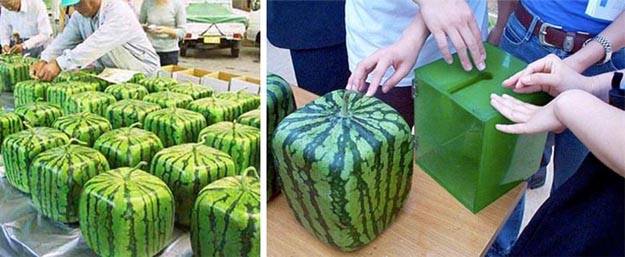
Saffron
Not something you'd particularly want to eat on your own, Saffron is arguably the world's rarest spice and if not the rarest, then certainly the most expensive.
Saffron is obtained by hand-picking the stigma (red bits) from the flower, each of which will produced around 2-3 stigma. In order to gather one pound of saffron, you need about 225,000 or so stigmas, from many tens of thousands of the flowers (which equates to roughly a football field's worth of flowers) and takes about 40 hours of work to pick enough for a kilogram. Long story short, it takes AN ETERNITY (possibly of despair) to pick a decent amount of saffron.
It is this lengthy process (and its rarity) that contributes to its outlandish price. A pound of saffron can set you back anywhere between $500 and $5,000, depending on where you were to purchase it from. But we can all agree that even $500 for a pound of spice is an awful lot.
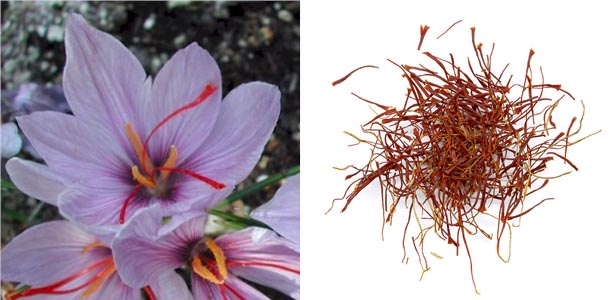
Densuke Watermelon
Watermelons are really great, don't you agree?
The Densuke watermelon is a variety of watermelon produced only in Hokkaido, Japan and has a luxurious black appearance, with no stripes or spots, just dark. Perhaps like the hearts of the farmers that produce it...But probably not.
The reason that this type of watermelon is held in such high regard most likely has nothing to do with the taste, but more so the fact that only 10,000 of the things are produced each year, which contributes to the overwhelming price some of them can fetch, as a particularly large Densuke watermelon went for $6100 when it was put up for auction last year.
On average, a single Densuke watermelon can fetch around $250, which is still a large amount of money to pay for something comprised mainly of the stuff that comes out of a tap.
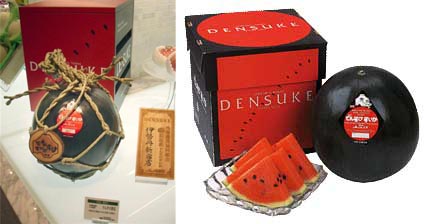
Find us on Google+
